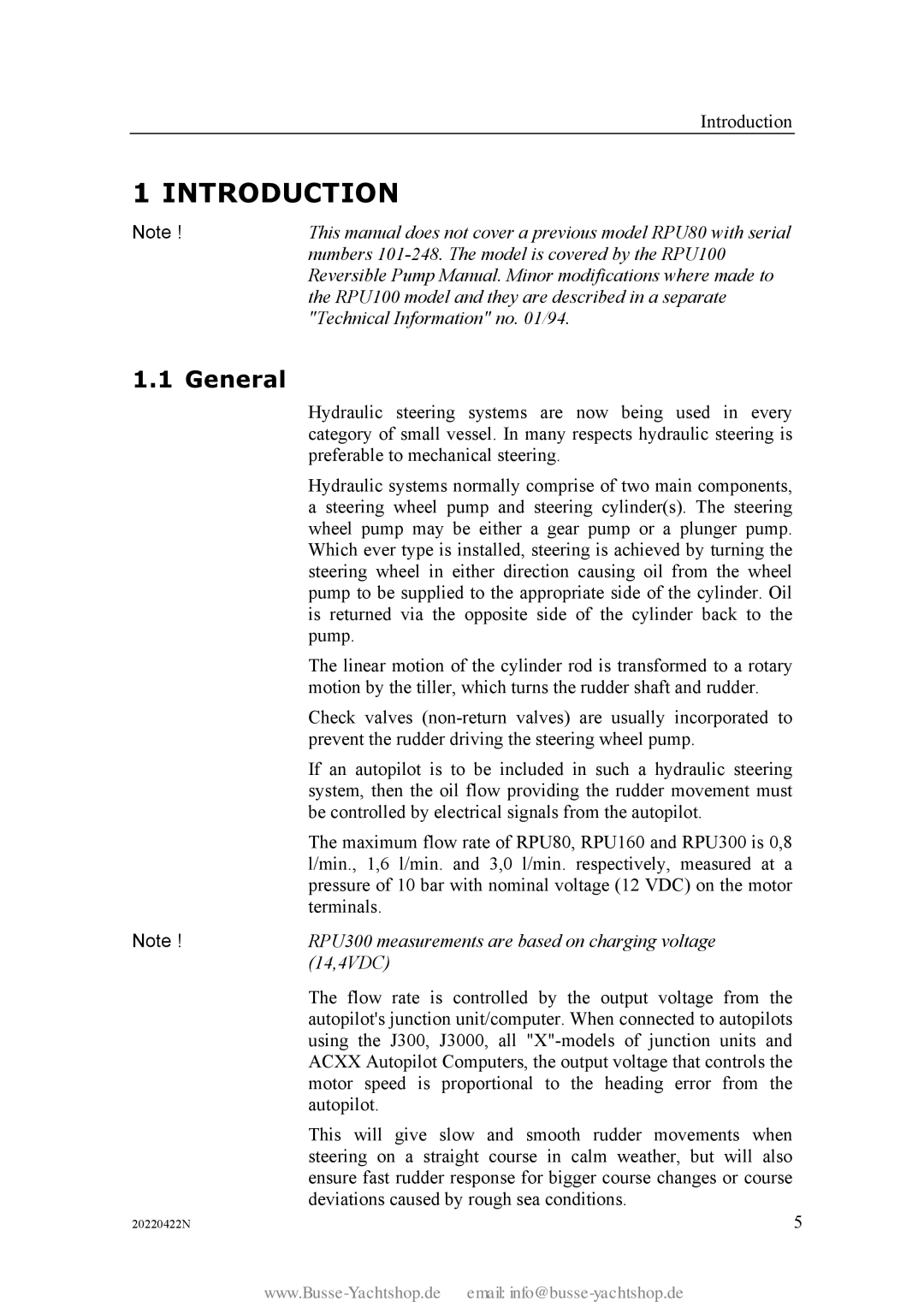| Introduction |
1 INTRODUCTION | |
Note ! | This manual does not cover a previous model RPU80 with serial |
| numbers |
| Reversible Pump Manual. Minor modifications where made to |
| the RPU100 model and they are described in a separate |
| "Technical Information" no. 01/94. |
1.1 General |
|
| Hydraulic steering systems are now being used in every |
| category of small vessel. In many respects hydraulic steering is |
| preferable to mechanical steering. |
| Hydraulic systems normally comprise of two main components, |
| a steering wheel pump and steering cylinder(s). The steering |
| wheel pump may be either a gear pump or a plunger pump. |
| Which ever type is installed, steering is achieved by turning the |
| steering wheel in either direction causing oil from the wheel |
| pump to be supplied to the appropriate side of the cylinder. Oil |
| is returned via the opposite side of the cylinder back to the |
| pump. |
| The linear motion of the cylinder rod is transformed to a rotary |
| motion by the tiller, which turns the rudder shaft and rudder. |
| Check valves |
| prevent the rudder driving the steering wheel pump. |
| If an autopilot is to be included in such a hydraulic steering |
| system, then the oil flow providing the rudder movement must |
| be controlled by electrical signals from the autopilot. |
| The maximum flow rate of RPU80, RPU160 and RPU300 is 0,8 |
| l/min., 1,6 l/min. and 3,0 l/min. respectively, measured at a |
| pressure of 10 bar with nominal voltage (12 VDC) on the motor |
| terminals. |
Note ! | RPU300 measurements are based on charging voltage |
| (14,4VDC) |
The flow rate is controlled by the output voltage from the autopilot's junction unit/computer. When connected to autopilots using the J300, J3000, all
This will give slow and smooth rudder movements when steering on a straight course in calm weather, but will also ensure fast rudder response for bigger course changes or course deviations caused by rough sea conditions.
20220422N | 5 |
